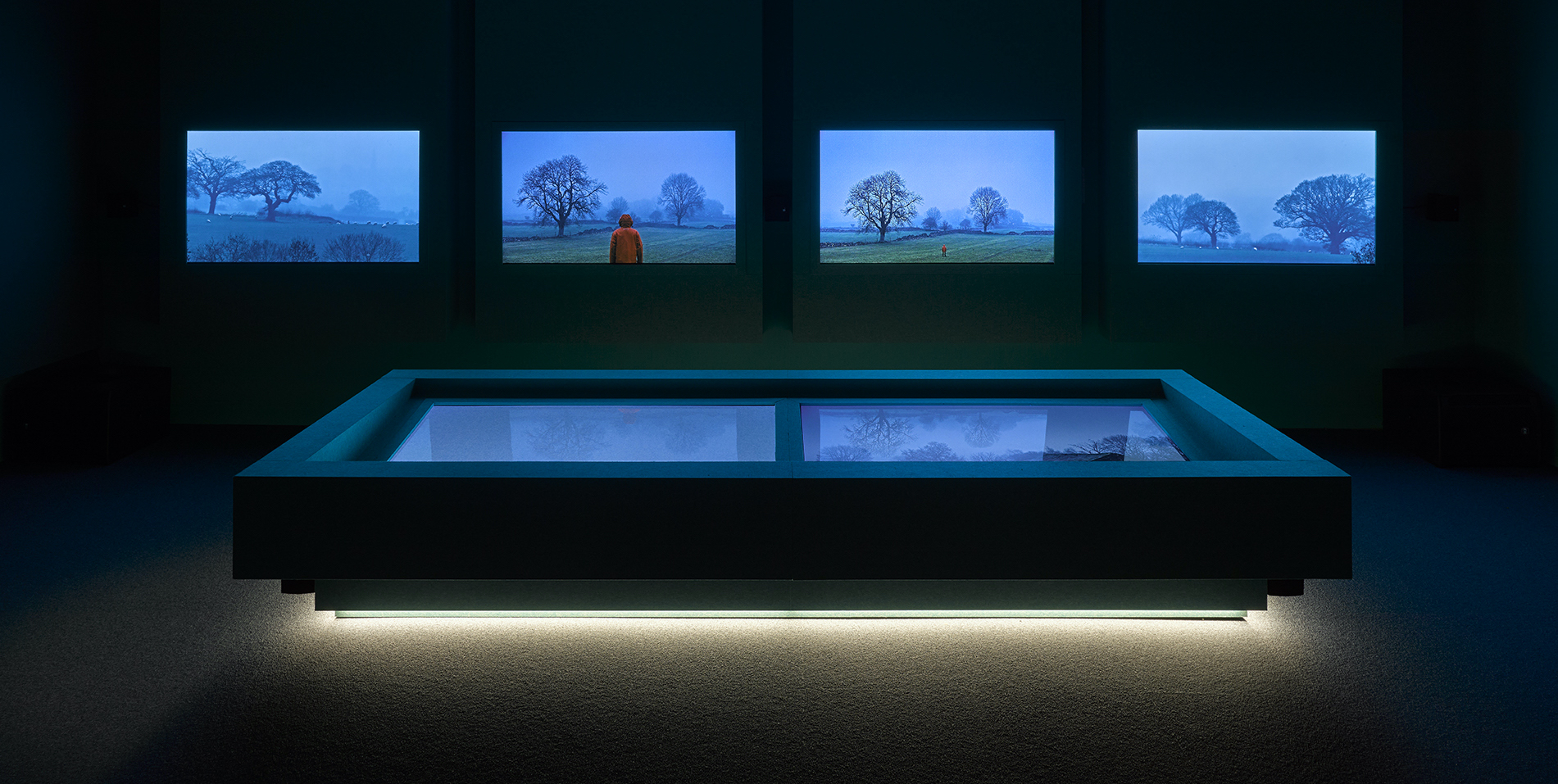From now until November 2024, Venice plays host to its 60th Biennale. We round up the installations and exhibitions not to be missed.
Foreigners Everywhere, the latest edition of the world’s oldest and most prestigious contemporary art exhibition, opened last week and runs until 24 November. Launched in 1895 and aptly described as the “Olympics of art,” the Venice Art Biennale pretty much takes over the entire city for six months. This edition’s central exhibition, organized by Brazilian artistic director Adriano Pedrosa (the first from the southern hemisphere) is in the main pavilion in the public gardens (the Giardini) and in former dockyards (the Arsenale). Also in the Giardini are 30 national pavilions, with around 60 more in the Arsenale and elsewhere in Venice, plus numerous other “collateral” events, some official, some not, in museums, foundations, galleries, churches and palazzos. With so much art on offer, weeks would be needed to see everything. Keeping that in mind, we’ve chosen 10 essential highlights.
Giardini
1. Australia: Archie Moore, Kith and Kin
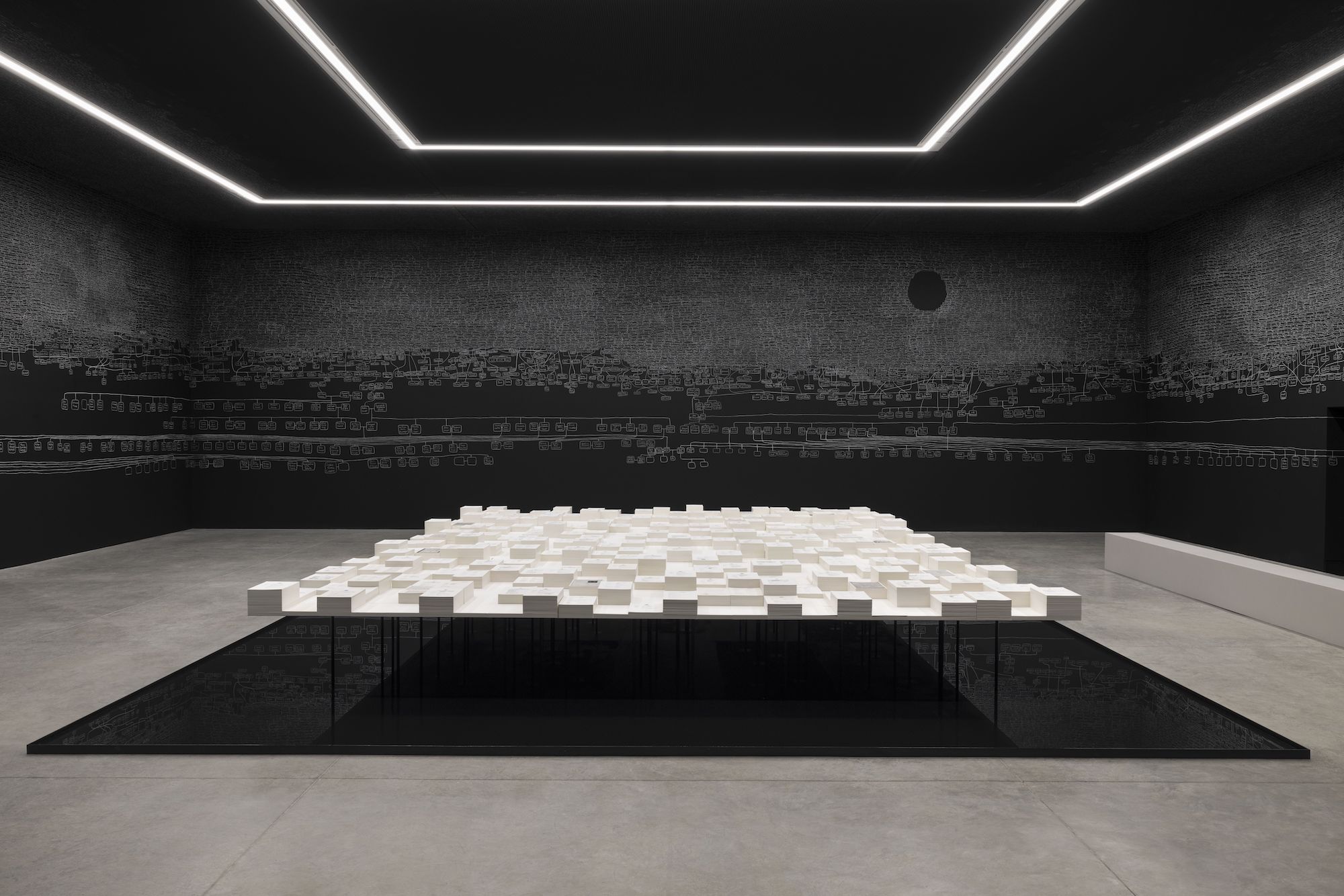
Winner of the prestigious Golden Lion for Best National Pavilion, First Nation artist Archie Moore has created a staggering artwork spanning 65,000 years. Thousands of rectangular white chalk boxes cover the black walls, mapping 2,400 generations in an expansive family tree. But there are holes in Moore’s genealogical chart, representing gaps in knowledge that could not be passed on due to colonisation, massacres, epidemics and even natural disasters. In the centre of the space, hundreds of piles of gleaming white documents are arranged meticulously on a table. Here are coroners’ reports with names redacted: the official proceedings of inquests into the hundreds of Indigenous deaths in state care since the Royal Commission into Aboriginal Deaths in Custody delivered its report in 1991. The Biennale jury said: “This installation stands out for its strong aesthetic, its lyricism, and its invocation of shared loss for occluded pasts.”
2. UK: John Akomfrah, Listening All Night to the Rain
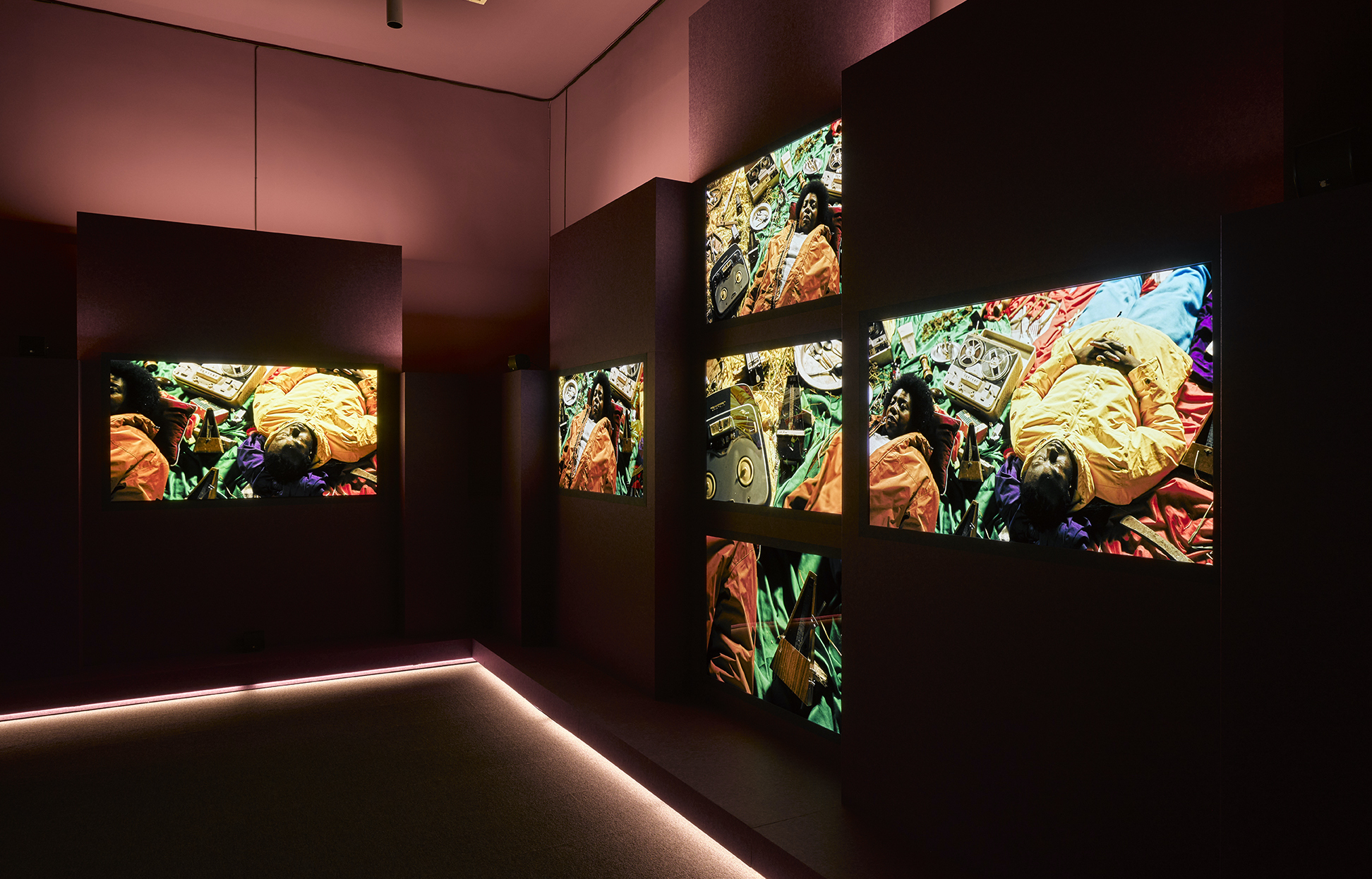
One could easily spend hours viewing John Akomfrah’s powerful film installation and still leave feeling overwhelmed by its complexity. Visitors entering the neoclassical Pavilion through the basement are immediately immersed in the first of eight interlocking and overlapping multi-screen sound and time-based works. The artist’s engrossing films encompass migration, racial injustice and climate change. Newly filmed material, archive video footage and still images are expertly woven together with audio and text.
3. Japan: Yuko Mohri, Compose
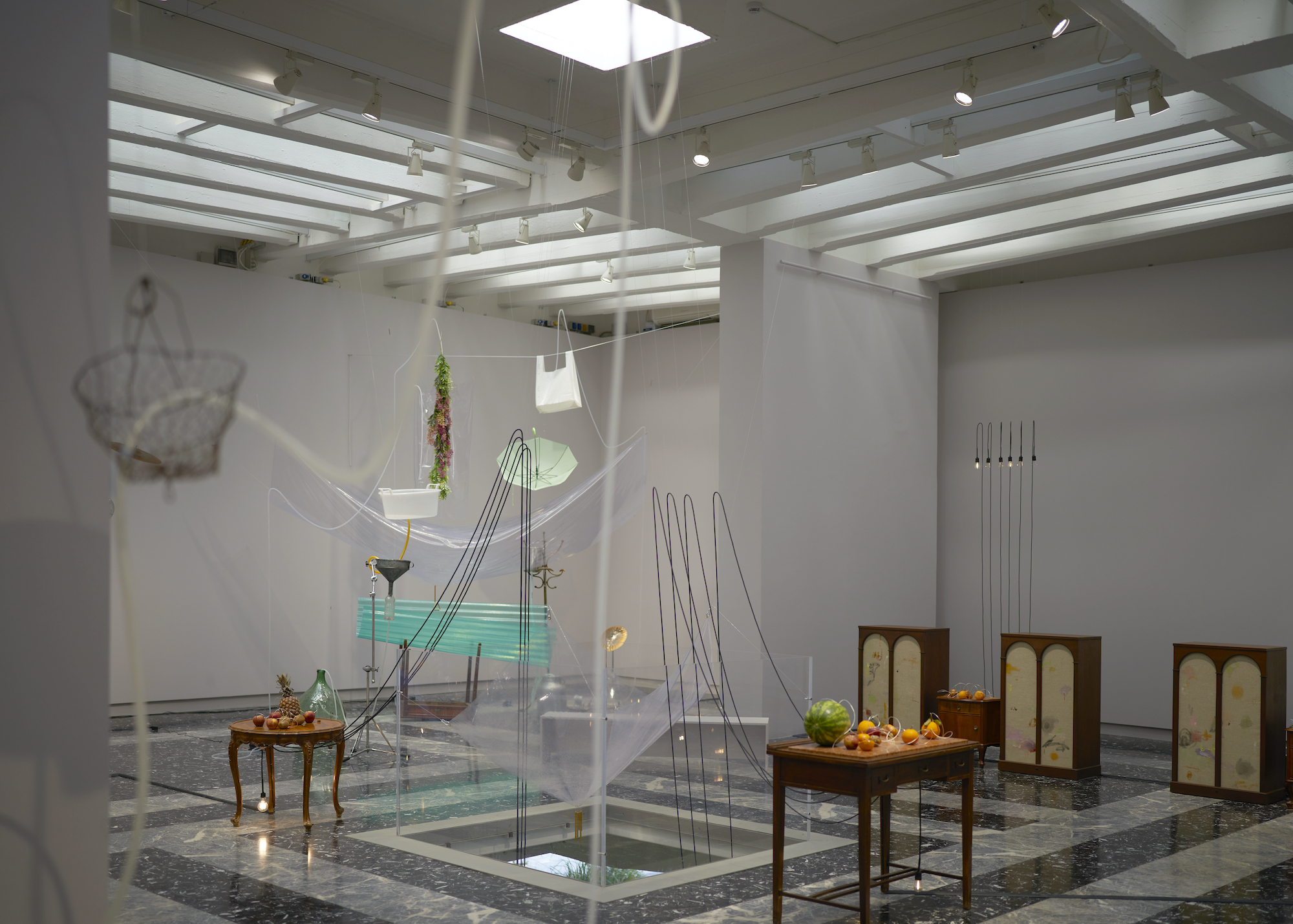
Inspired by the clever, improvisational ways that workers repair leaks in the Tokyo subway system, these materials are harnessed in Venice as instruments in a quirky orchestra. A whirring fan makes a rubber tube quiver, rustling a shopping bag in turn; rain falling onto a plastic sheet jostles a set of wind chimes. Throughout the space, groupings of rotting fruit are connected to electrodes; the fluctuating moisture content of the oranges, strawberries and grapes is converted into synth sounds and flickering light. The kinetic sculptures reference Erik Satie, Marcel Duchamp, John Cage, Nam June Paik, and the Fluxus Movement.
Arsenale
4. Malta: Matthew Attard, I Will Follow The Ship
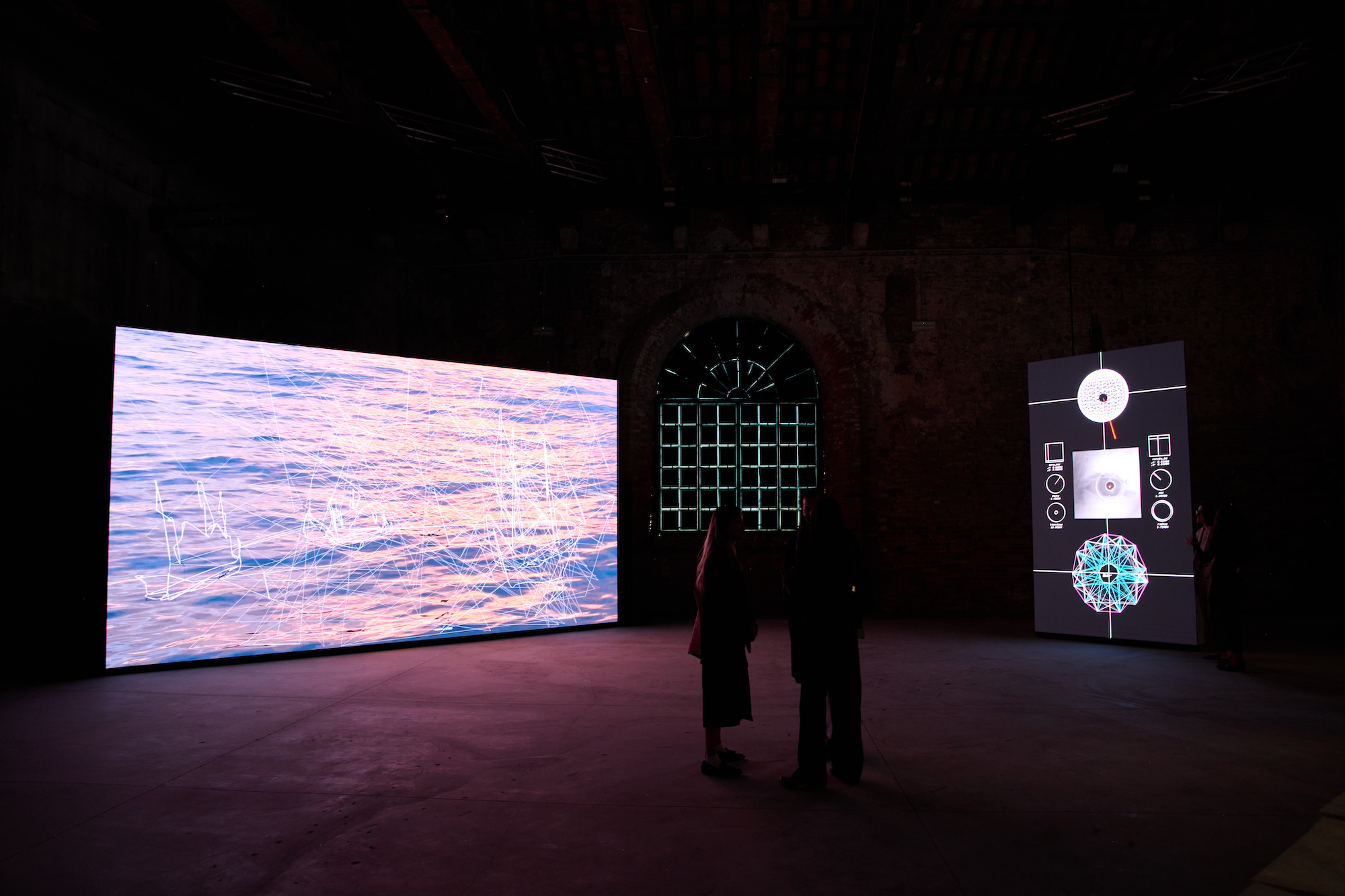
Contemporary drawing and digital technology are intertwined with historical imagery. The pavilion explores the legacy and meanings of ship graffiti, drawings and ex-voto motifs found on chapel facades in Malta. The artist shares the authorship of his art with an eye-tracker, an advanced scientific tool that has created the delicate, beautiful drawings. To the artist, this digital tool is an extension of himself, offering a platform to explore the hybrid territory between humans and machines: a smart collaborator in the production of contemporary art.
National Pavilions Offsite
5. Holy See (Vatican), With My Eyes: Giudecca Women’s Detention Home
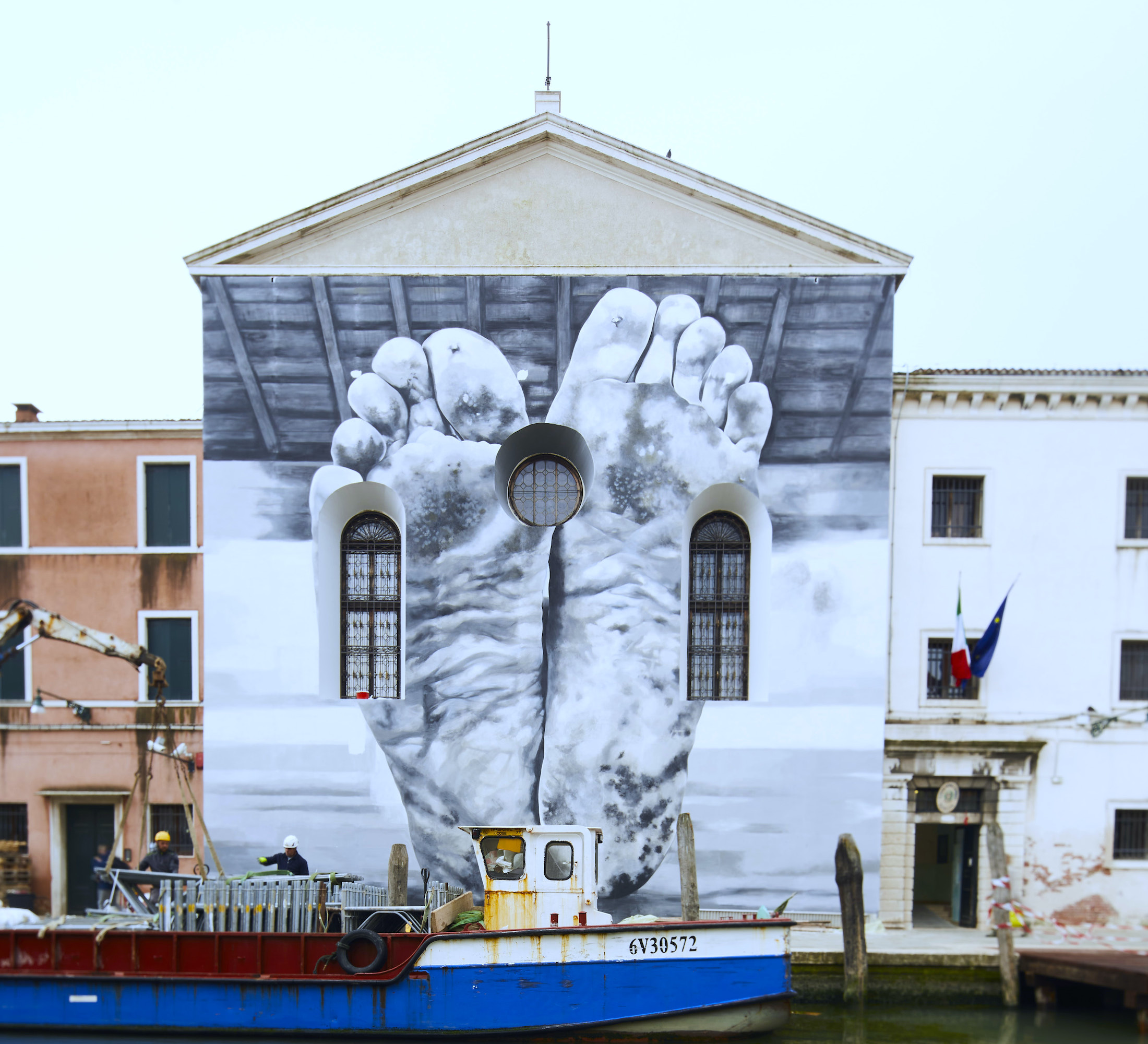
An exhibition inside a women’s prison on Giudecca island is an unmissable experience, if you can secure one of the 100 daily viewing slots. The Vatican Pavillion features contributions by inmates working with artists Bintou Dembélé, Simone Fattal, Claire Fontaine, Sonia Gomes, Corita Kent and Claire Tabouret. Dovecote, a moving short film by Marco Perego, stars Zoe Saldaña and 20 inmates from the prison. Visits to the Vatican Pavillion are offered in four tours each day, led by two women prisoners. Pope Francis will come on 28 April, the first-ever pontifical visit to the Biennale. It will be interesting to hear what the Pope thinks of the huge mural on the outside of the prison chapel wall. It is based on feet in paintings by Mantegna and Caravaggio, painted by Maurizio Cattelan, who notoriously created a hyper-real sculpture in 1999 depicting Pope John Paul Il struck down by a meteorite.
6. Nigeria: Nigeria Imaginary, Palazzo Canal
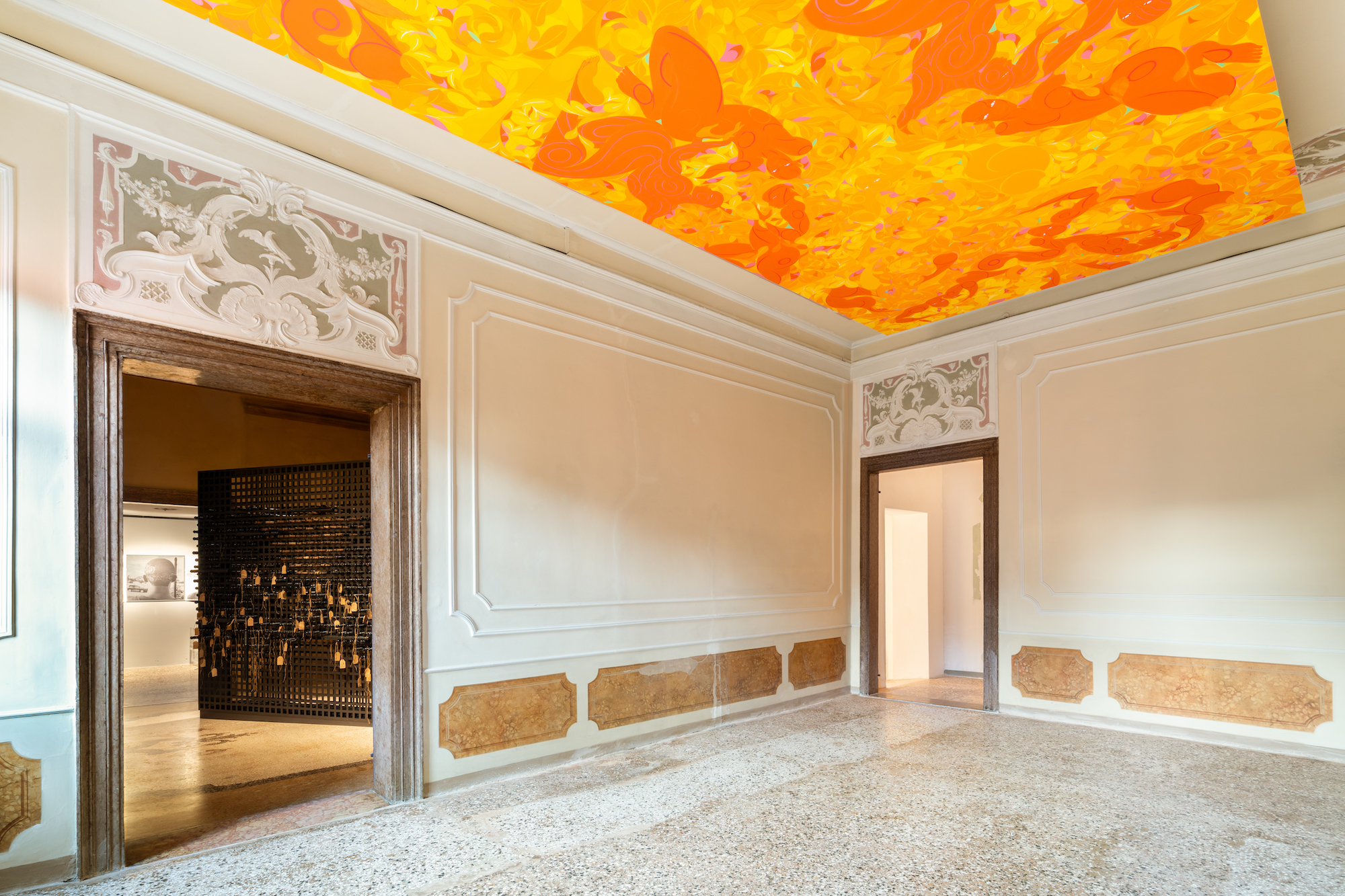
A vast 16th-century palazzo hosts one of the more optimistic national presentations. Curated by Aindrea Emelife of Nigeria’s Museum of West African Art (MOWAA), the site-specific works include painting, sculpture, drawing, photography, installation, sound, AR and film. Nigeria Imaginary acts as a present-day Mbari Club, a centre for cultural activity founded in 1961 by Ulli Beier, Wole Soyinka and Chinua Achebe who believed creating art is a duty to the nation. On show are an eclectic range of objects from the past, including fragments of a yellow bus, a two-faced Ikenga (a carved wooden figure symbolising power) and the vintage magazines Drum Magazine and Black Orpheus. In one room, there’s a stunning yellow and orange painting by Tunji Adeniyi-Jones unfurled across the ceiling while another has a highly detailed sculptural installation of replicas of looted artworks by Yinka Shonibare.
Collateral Exhibitions
7. Ydessa Hendeles, Grand Hotel, Spazio Berlendis

Located in a space in Venice’s historical Jewish Ghetto, Ydessa Hendeles’ installation Grand Hotel is based on her own family history and explores cultural identity, displacement, intergenerational trauma and loss, linking the past to the present. A Canadian and Polish citizen, the artist is the only child of Auschwitz survivors whose Jewish community in Zawiercie, Poland, was erased in the Holocaust. The show includes an intriguing collection of objects including paintings of the last rulers of imperial Russia, a model of a 19th-century grand hotel, a VW car from 1953 – the year the car was launched in Canada – and Louis Vuitton luggage, both brands of which have dubious ties to Nazi Germany.
8. Willem de Kooning and Italy, Gallerie dell’Accademia

Pioneer of Abstract Expressionism Willem de Kooning first showed at the Venice Biennale in 1950 as part of a group exhibition at the US Pavilion.The impact of the artist’s visits to Italy can be seen in this fantastic selection of paintings and drawings. Gorgeous black-and-white drawings, made during a stay in Rome, influenced his paintings on his return to America. Three examples of these are here: A Tree in Naples, Villa Borghese and Door to the River. The sculptures are less strong as they’re shown adjacent to work by Giacometti and Rodin which does not make for favourable comparisons.
9. Yoo Youngkuk, A Journey to the Infinite, Fondazione Querini Stampalia
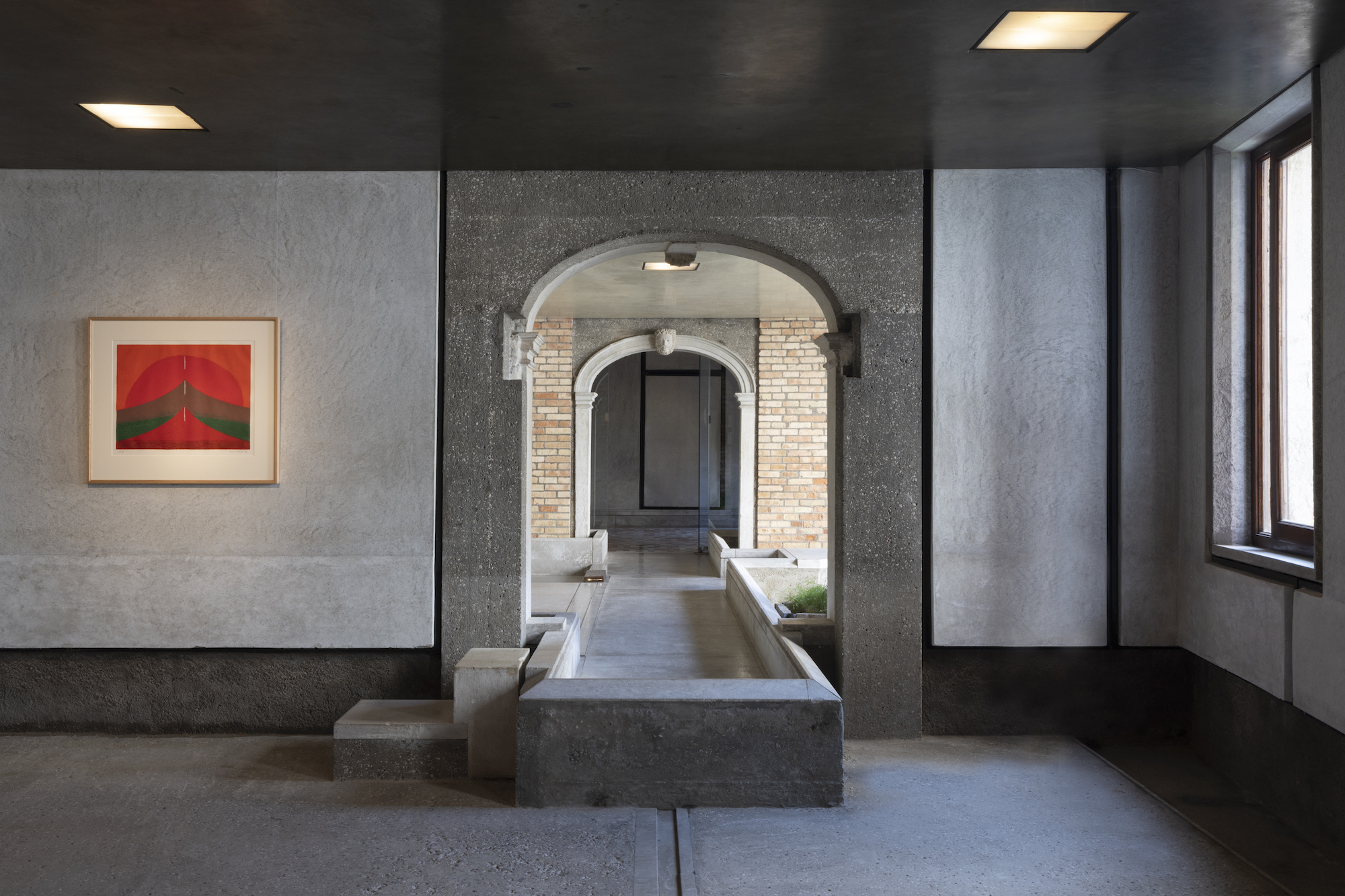
The Biennale always offers the chance to make new discoveries and Korean abstract painter Yoo Youngkuk (b. 1916) is a great example. Around 30 of the artist’s large-scale oil paintings and 10 prints, alongside archive material fill the historic palazzo, including on the stunning Carlo Scarpa-designed ground floor. With works never shown outside of Korea before, for most viewers, this will be their first time experiencing Yoo’s richly hued paintings with their nuanced play of colour and form.
10. James Lee Byars and Seung-taek Lee, Invisible Questions That Fill The Air, Palazzo Loredan
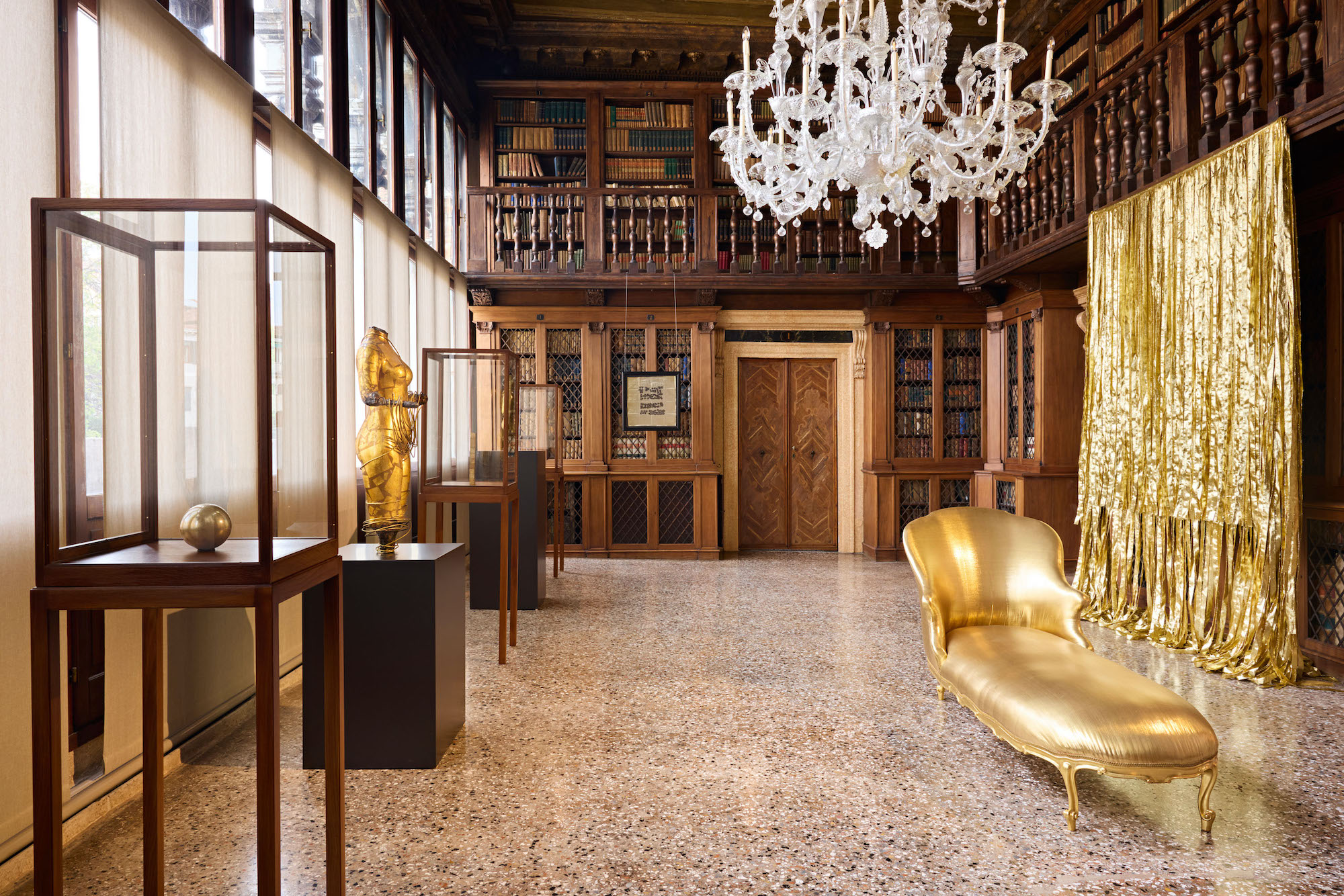
Another Korean artist who should be better known to Westerners is Seung-taek Lee (b. 1932) who is shown alongside American artist James Lee Byars (1932-1997). There are surprising parallels in the work of these avant-garde artists despite the two never having met. Both artists share a deep curiosity for history and the arts of the past. It’s a gorgeous show featuring gleaming sculptures of gold, wood and rope in a palazzo that produced three Doges and is now a scientific library. The eerie similarity between the two artists means it’s often difficult to immediately determine whose work is whose.
The Venice Biennale is open daily except Mondays until Sunday November 24, 2024. Tickets: €30 or 3 days €40/weekly €50 Concessions € 20/€16. Off-site exhibitions throughout the city are free and most run through until the autumn but do check dates.
Read more: Design Fairs | Design | Art | Interior Designers I Interiors | Italy



